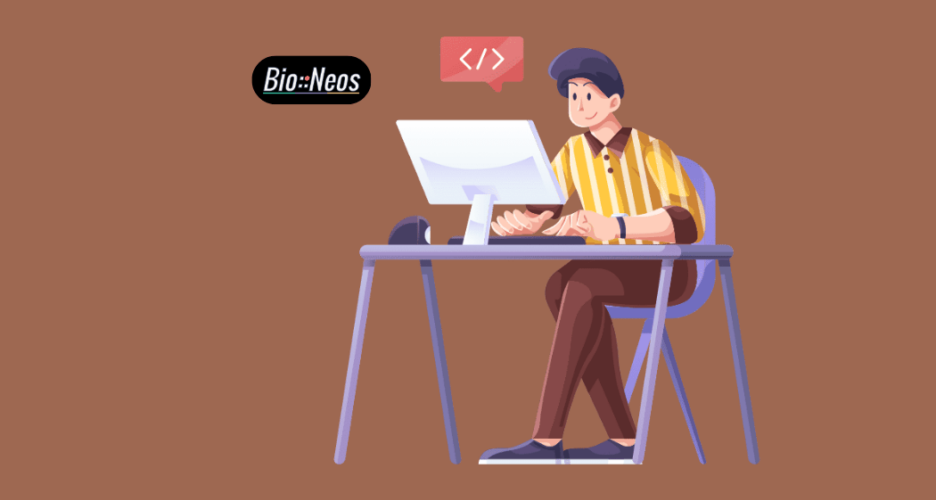Meeting students and helping them explore possible STEM careers is something that we at Bio::Neos believe is important both for their future, and the local community. Plus, I find it really enjoyable to interact with these inquisitive young students! In the last two weeks, I had two opportunities to engage with students wanting to learn more about different career paths. On November 7th I setup a Bio::Neos booth at the Johnson County Career Fair in Coralville. Then, on November 19th, I presented to over 100 students the STEM Institute organized by Kirkwood Community College's Workplace Connection.
The Johnson County Career Fair wasn't a traditional career fair. While a career fair usually has the goal of connecting job seekers and employers, this fair had the goal of introducing high school students to different career fields. Students walked around and spoke with professionals from a large variety of industries in a very low pressure setting.
A few of the students who stopped by the Bio::Neos table were already interested in pursuing a STEM career and I really enjoyed chatting with them. However, the majority of the students that I met had never considered a STEM career. Most of them told me that that they wanted to go into a field like nursing, social work, or education because they wanted to work and interact with people every day, and they thought that technology careers would have them sitting behind a computer in a cubicle all day long. I'm honestly surprised to hear that stereotype still persists!
In order to connect with the students (and start to break down that inaccurate stereotype), I used a web application that was created by our developer Michael Lyon. The object was to correctly guess the correct sequence of colored buttons to press within a set number of clicks. It was somewhat modeled after a game from my childhood, Simon. I asked students to give it a try on my computer and their phones. After they had a chance to try it out, I asked for their help. I explained to them how it was functional but basic and I wanted to improve it. I had them come up with improvement ideas on the spot: adding a timer, displaying instructions, making it responsive, bigger buttons, and bigger text. Then the fun started!
As they watched, I would pop open the code and furiously start to make the edits they would suggest. Most of the time, I was able to rapidly finish their suggestions in just a few minutes while I talked to them. All the changes were live on the internet so I would have them refresh their phones after we finished, so they could immediately see the changes. A few students even pointed out more problems after we'd made their suggested improvements.
Once we had finished working, I brought it full circle. I pointed out that they had just worked in a STEM position by collaborating on a software project with me. A few students were unimpressed with my demo, but I could see the lightbulb above several heads that day! It seems that many students have never been exposed to a true experience common in many STEM careers: collaborative innovation as an interdisciplinary team. STEM careers can involve a lot of teamwork and communication, and that means interacting with people. Hopefully my demo changed a few minds and expanded the career options for these young students.
My next event, the STEM Institute, was organized as an event that exposed all the seventh grade students at a few local schools to several different STEM careers. The students were able to select three 30 minute presentations from a dozen or so professionals who currently work in STEM industries. I talked about the my own career path including entrepreneurship and bioinformatics but focused on software development for the bulk of the presentation. Once again, I used the web application to engage the students in a hands-on software development activity.
The changes suggested by the STEM Institute students included different colors, additional game levels, and adding trivia questions. The students were enthusiastic to see their ideas being incorporated into the app. I recommend trying out the web application for yourself. The new levels and trivia questions make the game play engaging and fun, and one team even added an easter egg (see if you can find it). Most of these students already had an interest in pursing a career in technology, but I think my demo encouraged them to continue pursuing that interest. There were a few that were on the fence, but after participating with the group, they genuinely seemed more interested in the idea of a STEM career.
I always try to encourage these students to get started today, and use the available resources to start building their skills. Students who are specifically interested in exploring software development careers should check out online resources like Khan Academy and Code Academy to learn more about coding. Languages like HTML, CSS, or JavaScript are great starting points to learn how to create web applications.
Are you an educator or parent interested in finding out more about opportunities for your students to explore different careers? Or are you a business owner that wants to know about future outreach opportunities like the Career Fair and STEM Institute? Please contact us or visit us on LinkedIn to learn more about our commitment to our area's schools and students and how you can be involved. We'd love to hear from you!
Follow us on LinkedIn for all of our news!

